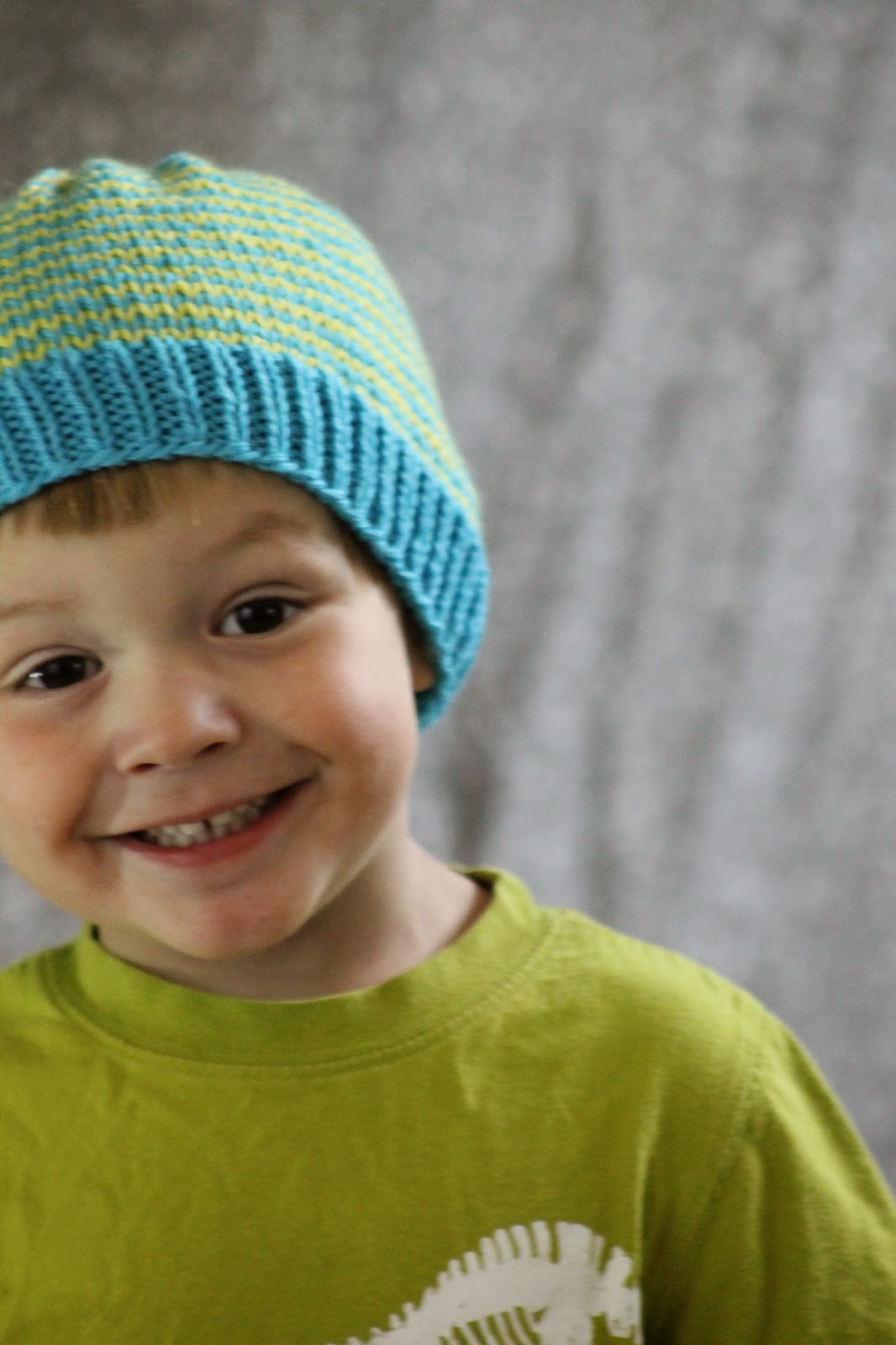 |
| Sunny Stripes Hat ... plus a very wiggly child... |
Sometimes, I feel as if I'm trapped in an endless hat knitting cycle with my children; as soon as I finish a hat for one of them, the other one immediately gets jealous and demands yet another hat. Which is how the Sunny Stripes Hat came to be, in all of its stripe-y glory. And it's not just the stripes that make it fun; it's also the slip stitch accentuated finish, which make it look almost like the celestial body it's named for. Plus, it comes in all sizes, so you can knit one for every member of your family (pets excluded)!
Sizes: Small (Medium; Large) (Small is 7.5" from crown to bottom, and will fit up to a 20" circumference head - think pre-schooler to young elementary, unless the kid's got a huge noggin like my children; Medium is 8.5" from crown to bottom, and will fit up to a 22" circumference head - think older kid to teen to smaller-headed adult (this would be my size); and Large is 9.5" from crown to bottom, and will fit up to a 24" circumference head - perfect for my husband)
 |
| The finishing. Slipped stitches give it an extra sunny feel. |
Yarn: Cascade Yarns Cascade 220 (100% Peruvian Highland Wool; 220 yards [200 meters]/100 grams); #8906 Blue Topaz - one skein (color A), Cascade Yarns Cascade 220 Heathers (100% Peruvian Highland Wool; 220 yards [200 meters]/100 grams); #2439 Gelato - one skein (color B)
Needles: One 16" circular needle in size US 5, one 16" circular needle in size US 7, one set of double pointed needles (dpns), also in size US 7
Notions: Tapestry needle, stitch marker
Gauge: 20 stitches = 4 inches
Before we begin, a quick note about sizing; as you may have noticed, I recommend medium for anyone between, like, 5 and adult. This is simply because most head growth occurs in the first couple of years, and, for instance, my five-year-old's head is only 1" smaller than mine in circumference and 1/2" smaller than mine crown-to-base-of-ear. Which means, yes, we would both wear the medium. Of course, not everyone's children have such monstrous heads, and the small size could fit a much older child. Finally, if you're knitting this hat as a gift and have no idea about sizing, I recommend large for most men, medium for most women and teens, and small for most everyone between 2 and 8 or so. Go up a size if they seem large-headed, or add 1/2" to 1" to the length. And now that we're all thoroughly confused, let's get started!


















